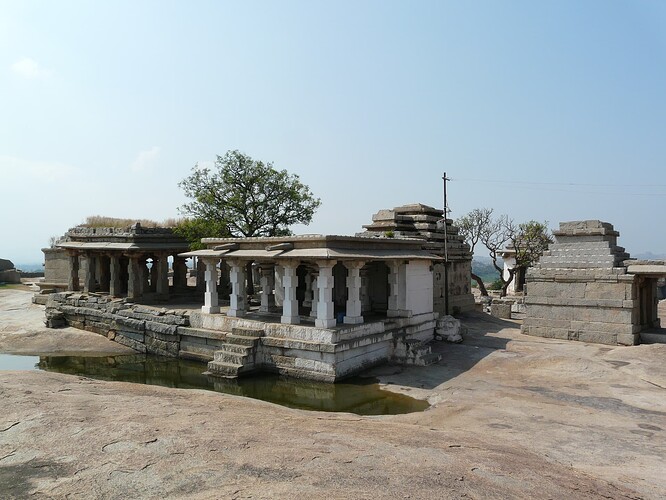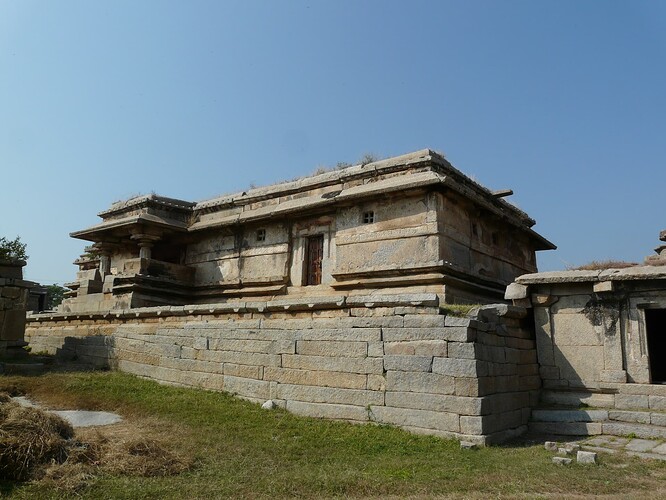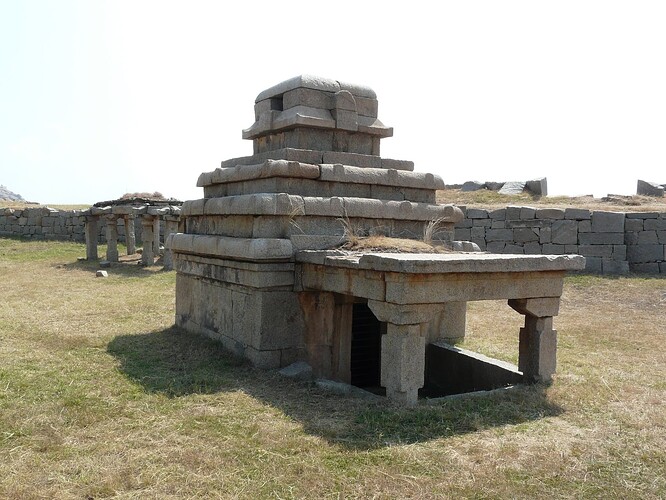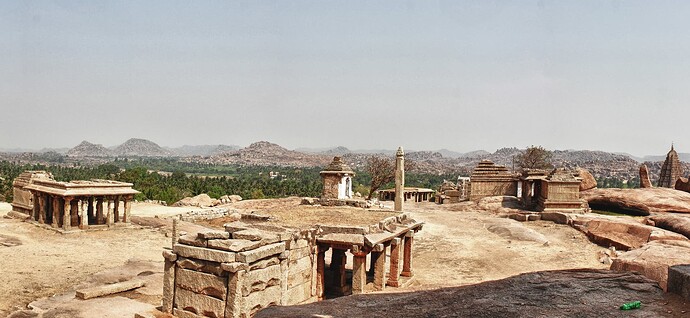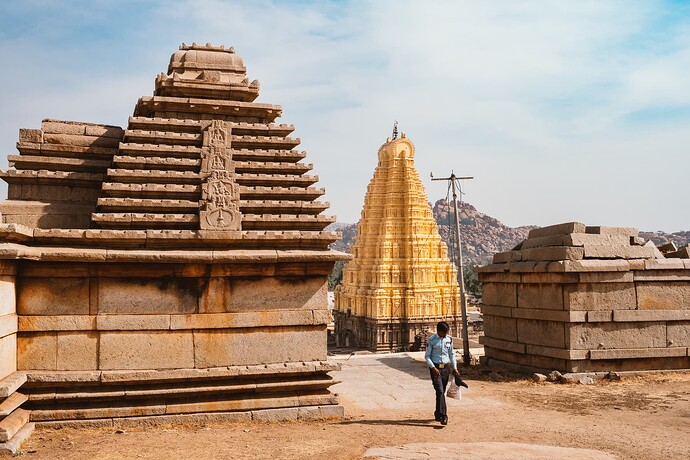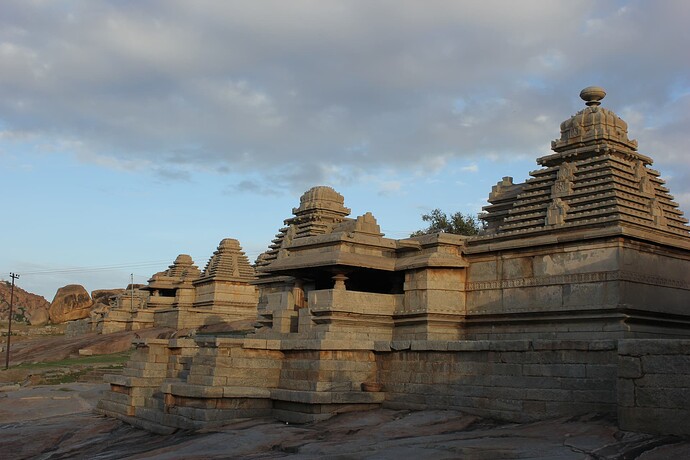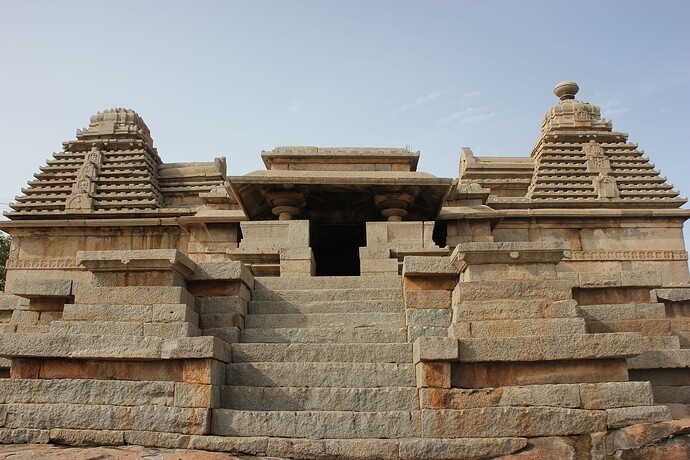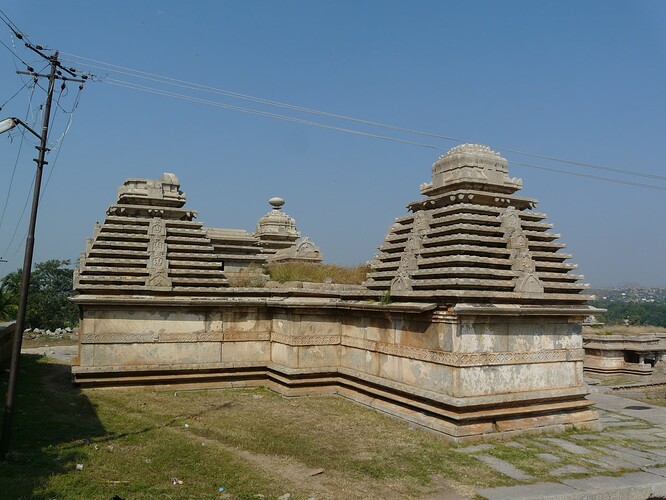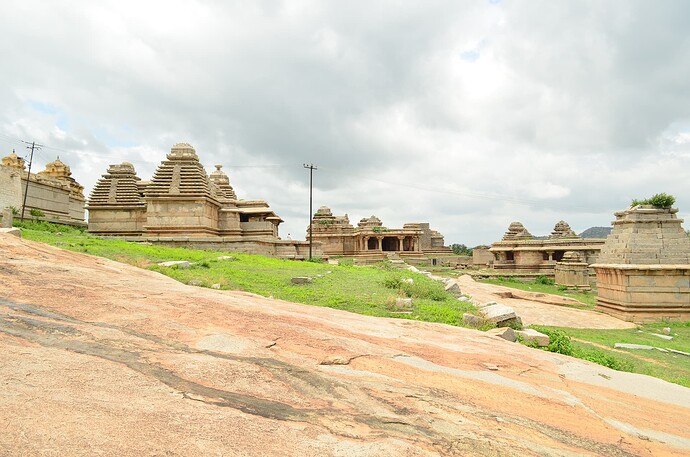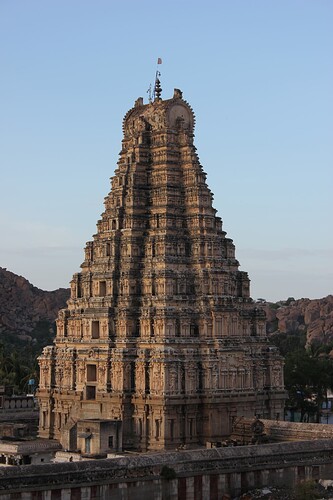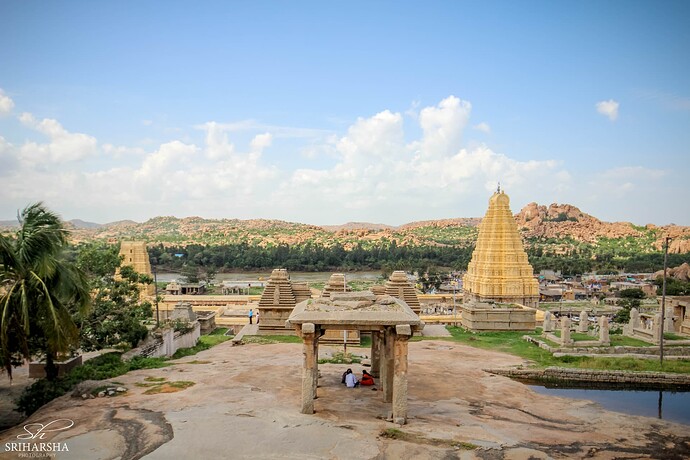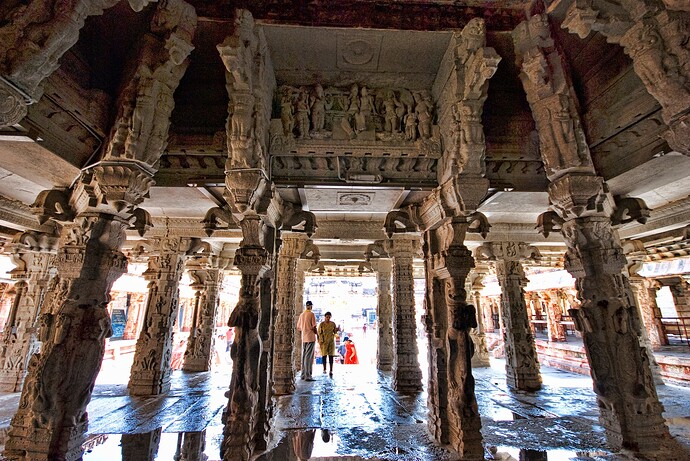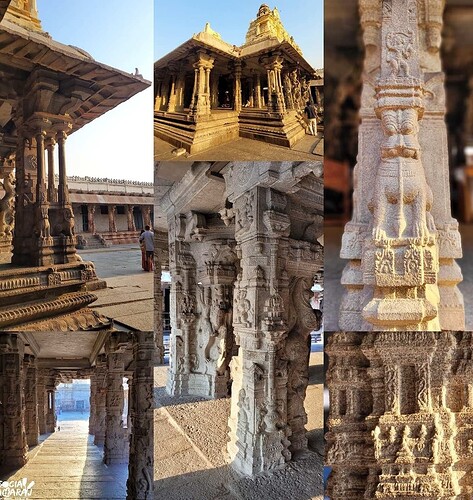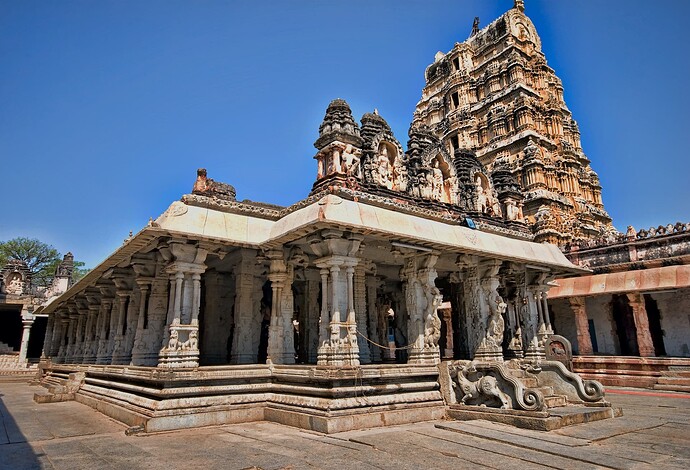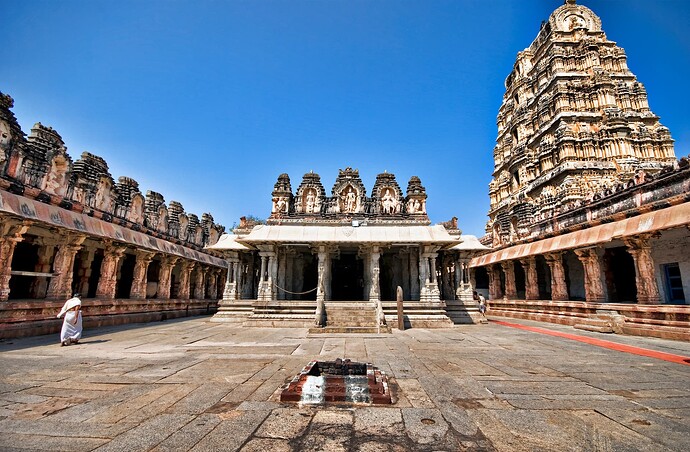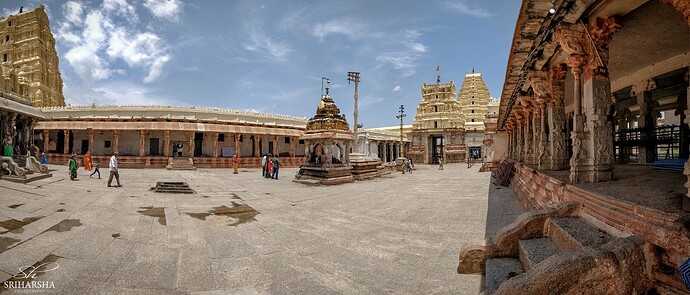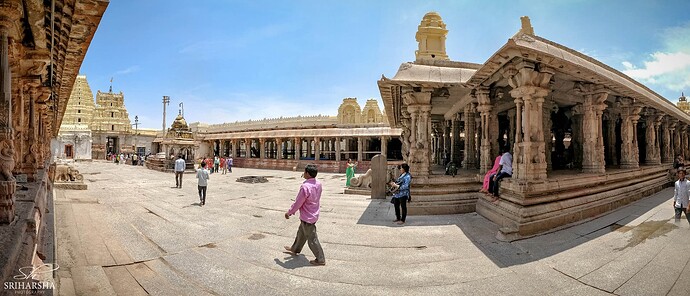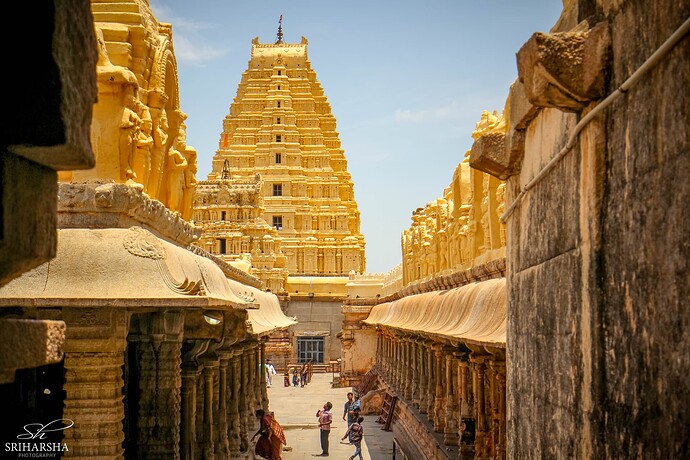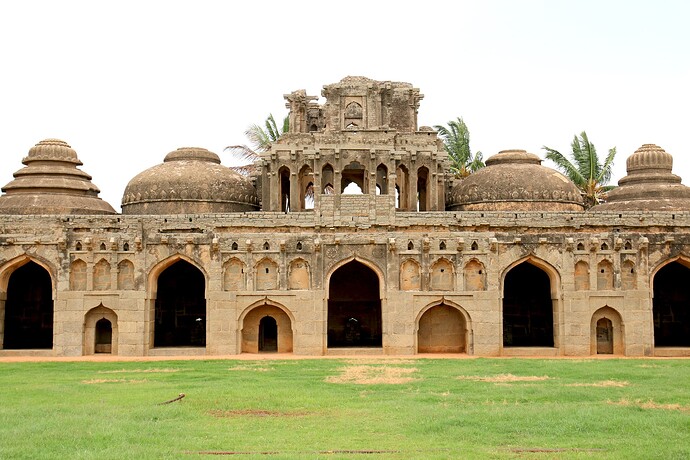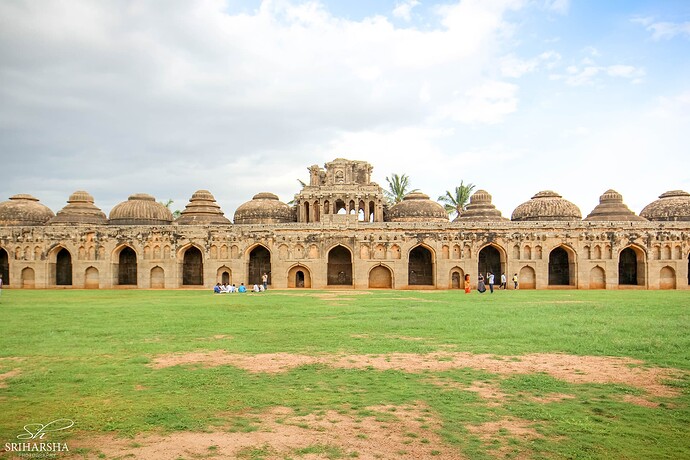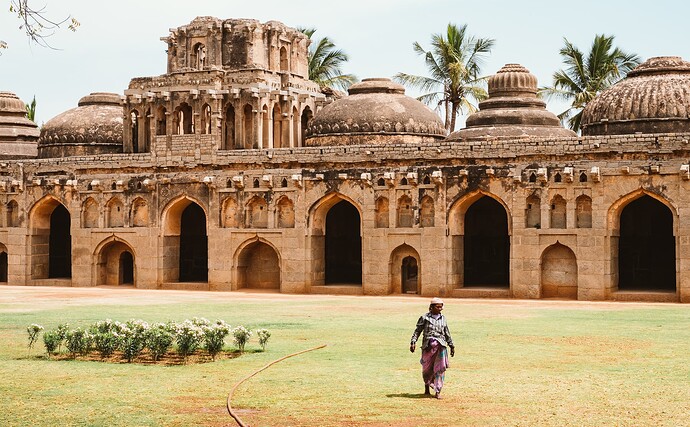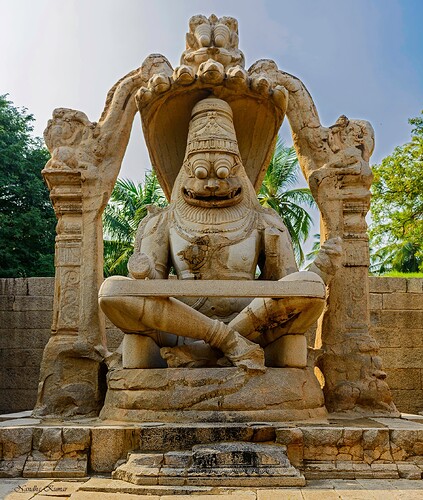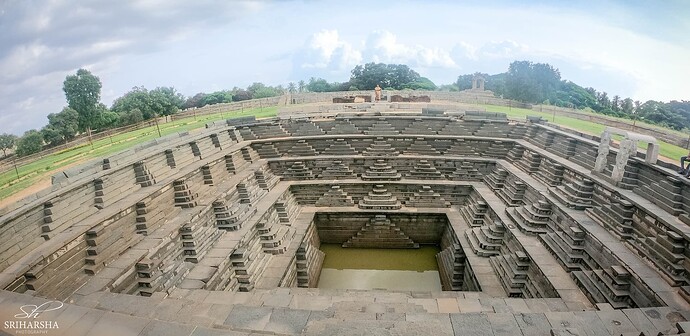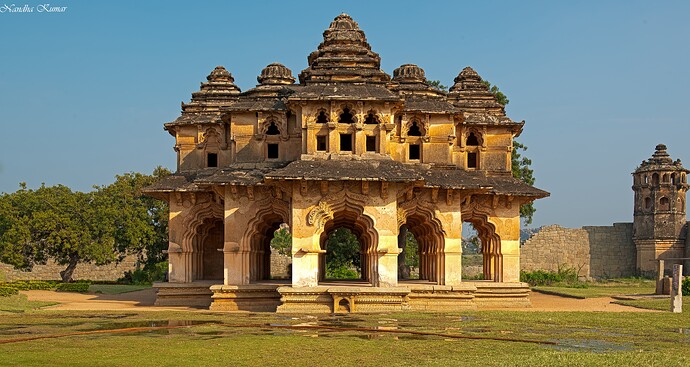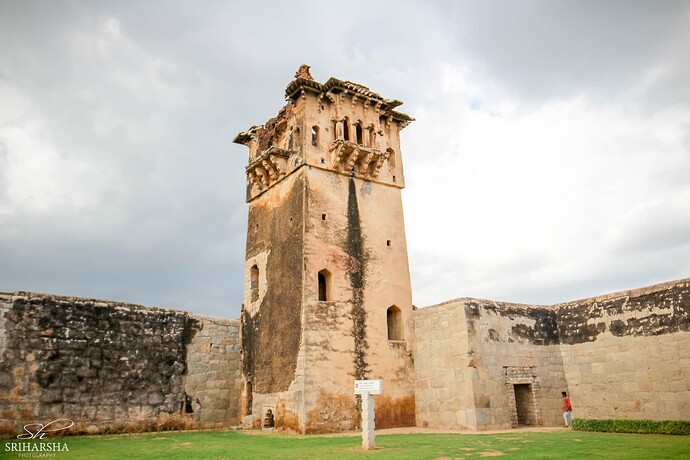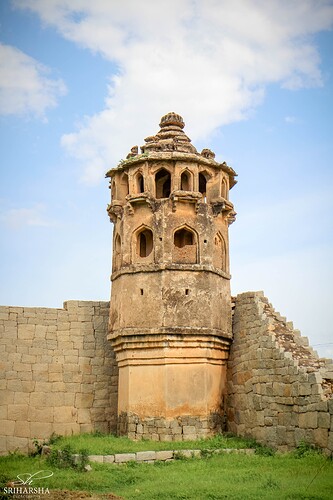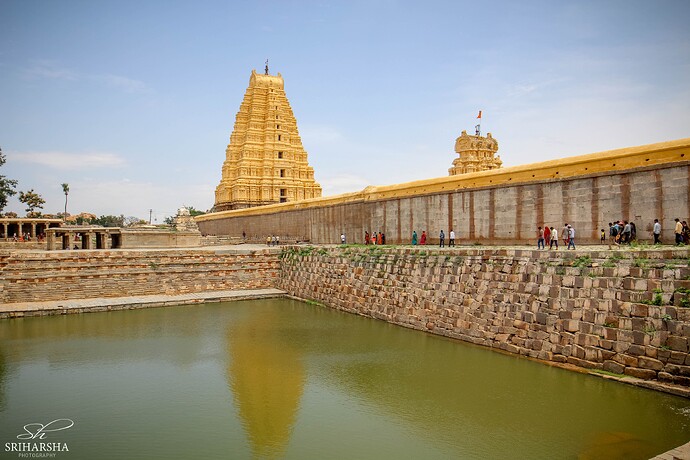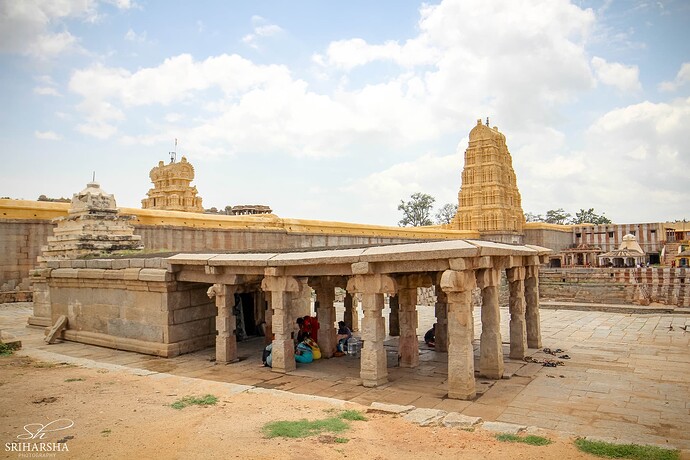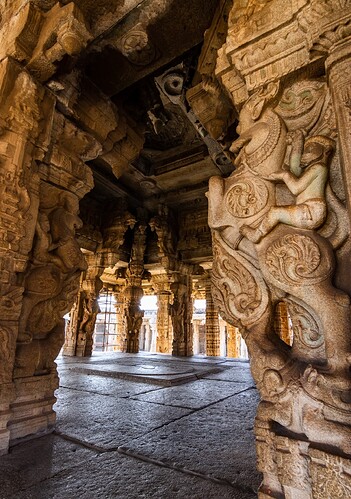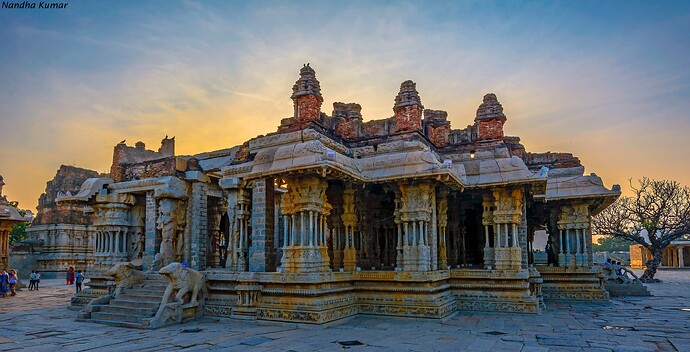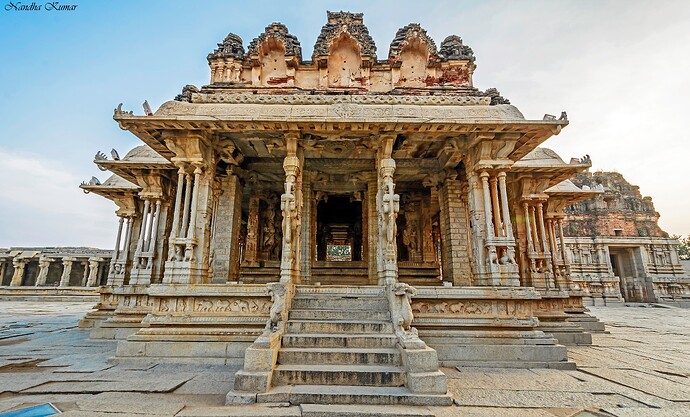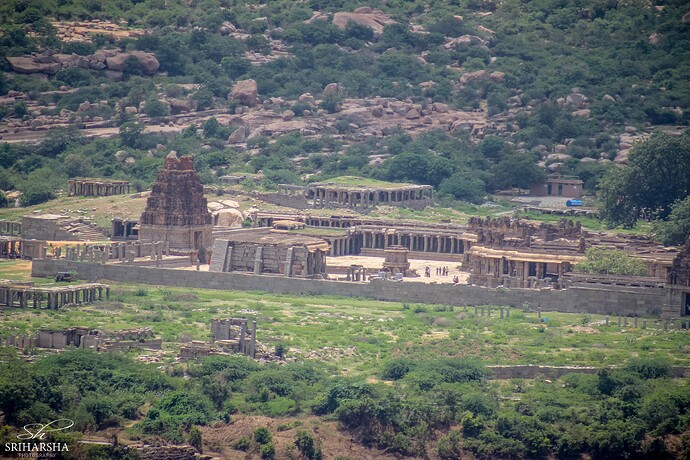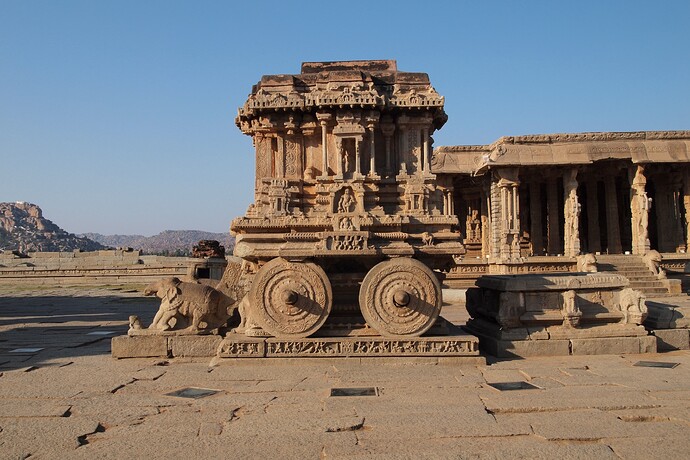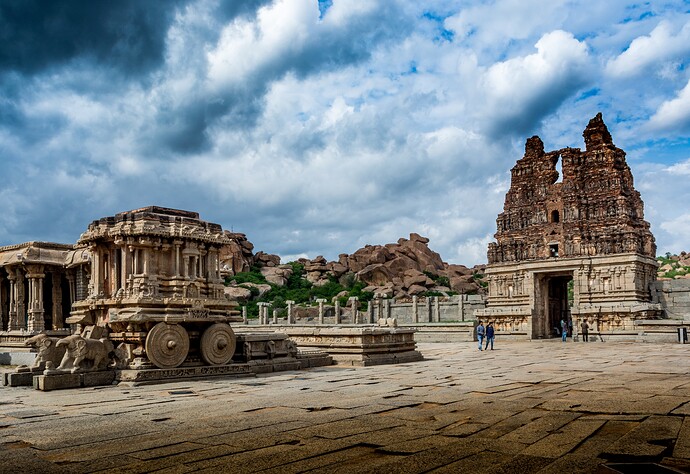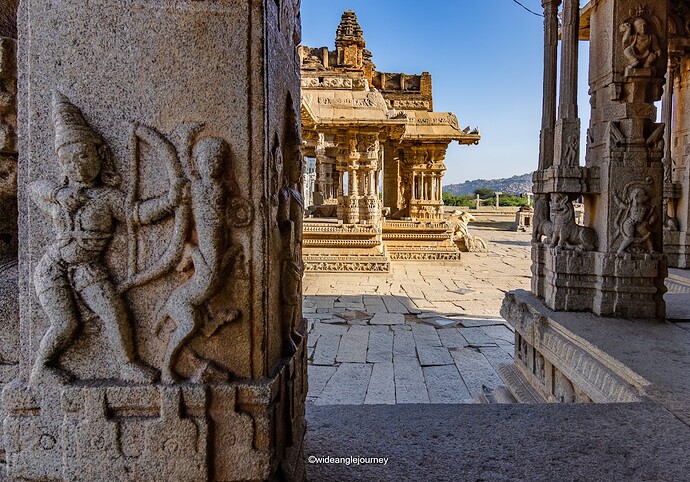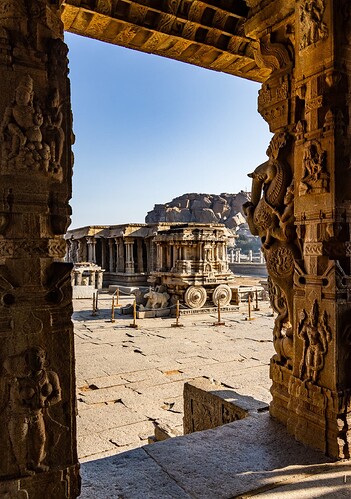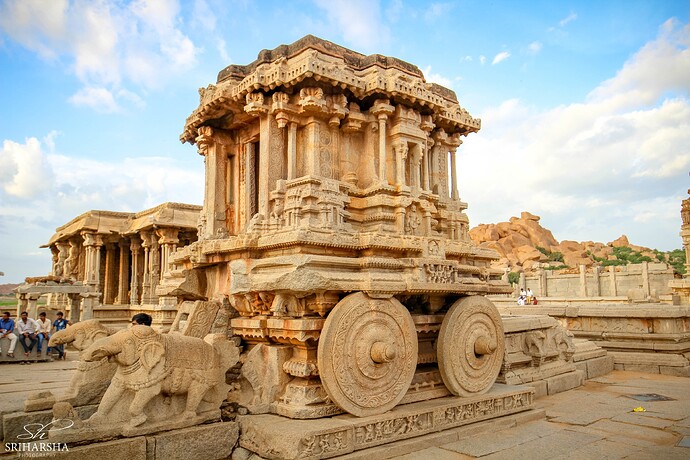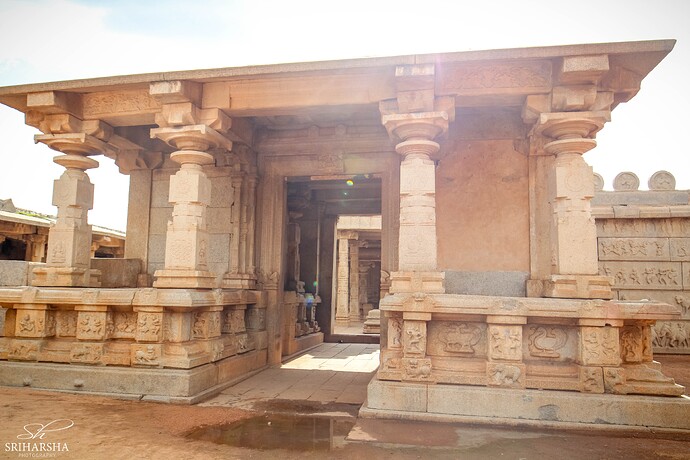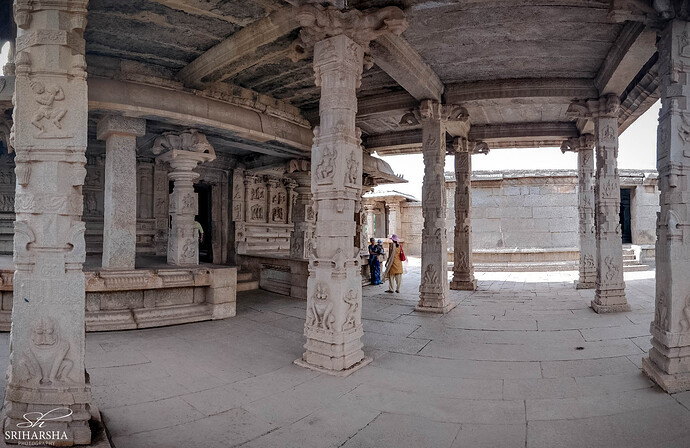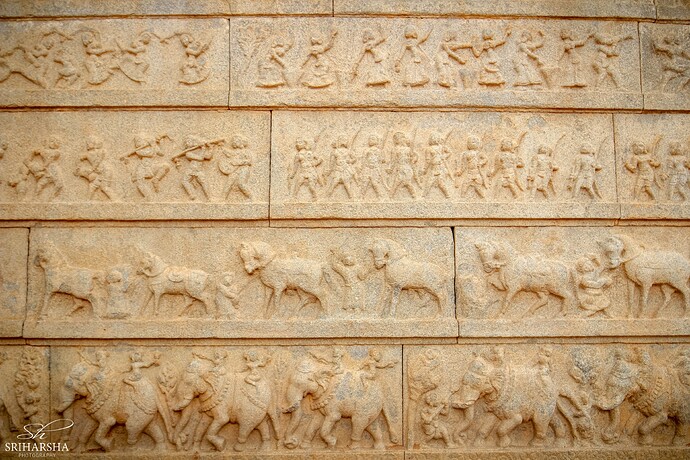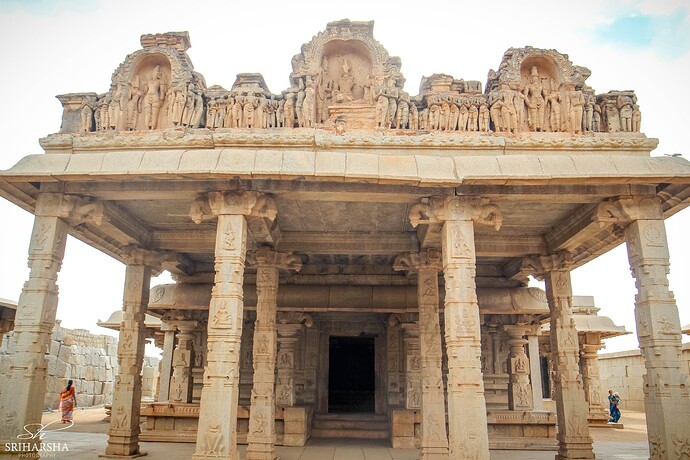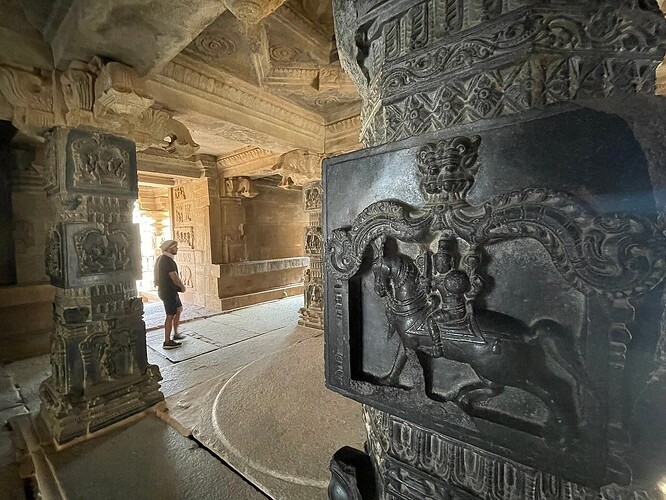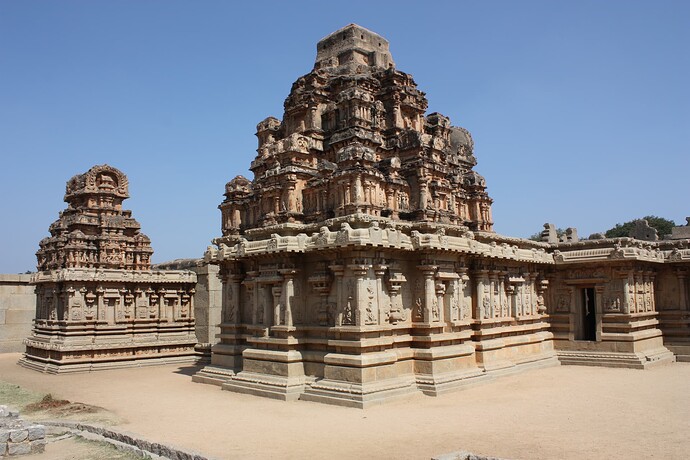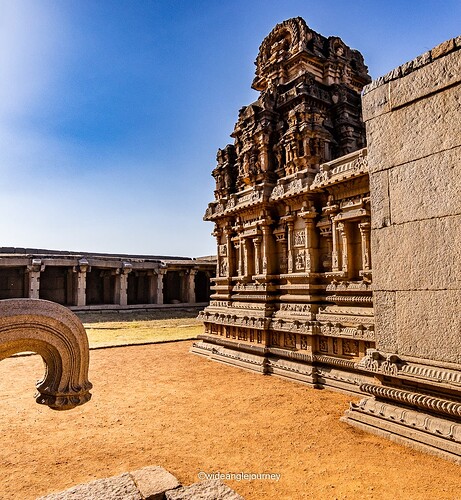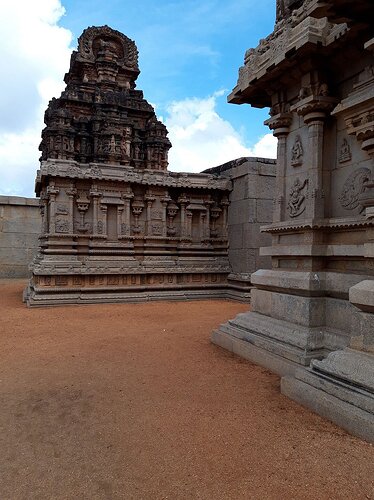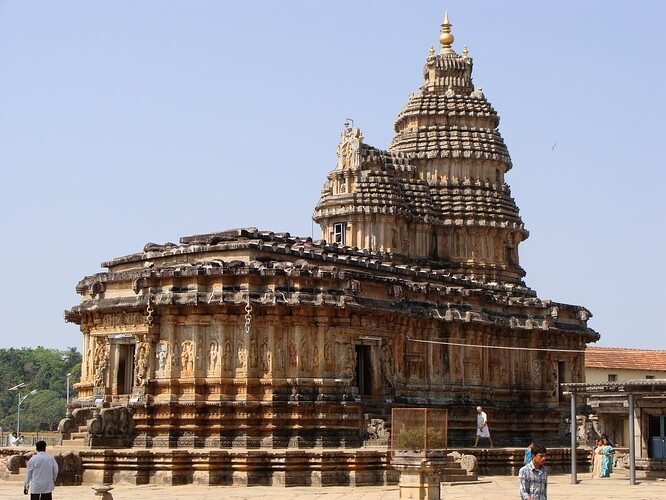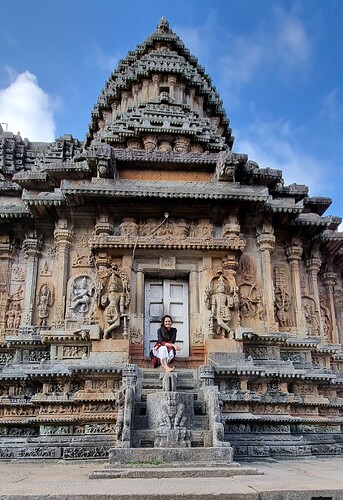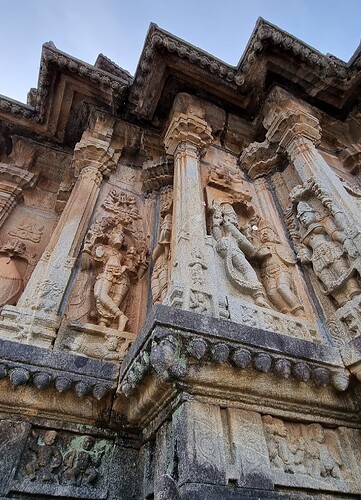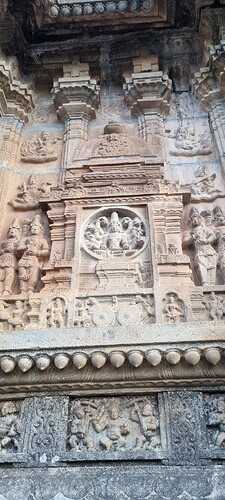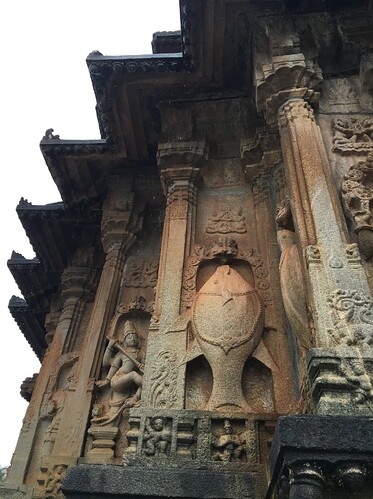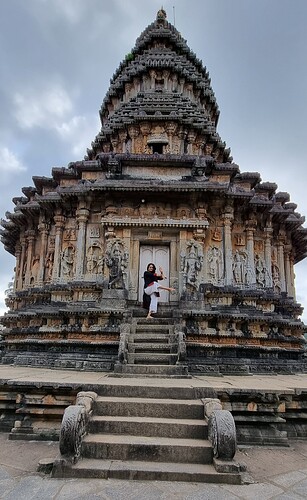Interesting that you’re not a fan of Delhi but picked the two most Islamic-influenced buildings out of the ones I posted ![]() . My favorite are the temples and the intricate gopura. I love all the detail. But hey it wouldn’t make sense to add Vijayanagara without adding a civ representing the Islamic Sultanates of Northern India so one way or another we’d have had them eventually!
. My favorite are the temples and the intricate gopura. I love all the detail. But hey it wouldn’t make sense to add Vijayanagara without adding a civ representing the Islamic Sultanates of Northern India so one way or another we’d have had them eventually!
I did some research, including good quality photos, about the architecture used by the Vijayanagara Empire, with the aim of complementing this topic and showing those who don’t know a little more about the architecture of South India.
I hope appreciate.
So let’s travel with me through the Vijayanagara Empire:
The Vijayanagara architecture is a combination of Chalukya, Hoysala, Pandya and Chola styles.
Vijayanagara Empire built its capital at Hampi, calling it Vijayanagara. All photos are from the Hampi region, except the final photos of the Sri Vidyashankara Temple which are from another region in South India.
Hemakuta Hill
This Hill lies between the Virupaksha Temple complex to the north and the Krishna Temple to the south. There are several structures close to the Virupaksha Temple.
Remembering, being on top of this Hill, it is possible to have a good view of the Virupaksha Temple.
This Hill has several monuments of modest size that are examples of pre-Vijayanagara and early Vijayanagara constructions.
Some of the structures are prototype temples or mandapas of different sizes, assembled from stone blocks.
The most recent structures date from the beginning of the 14th century.
This hill has more than thirty small to moderate-sized temples, as well as water cisterns, portals and secular pavilions.
The Hill also has several Shiva temples.
Virupaksha Temple
Virupaksha was the patron deity of the rulers of Vijayanagara.
Virupaksha Temple, dating from the 7th century, has operated without interruption since its creation until today.
The tower and temple date back to the early 15th century, but repairs and expansions date back to 1510, during the reign of Krishnadevaraya.
In addition to building new temples, the Vijayanagara empire added new structures and made modifications to hundreds of temples in southern India.
The gopuram (tower) is 52 feet tall and has 9 floors and is currently painted in pastel colors with a pair of cow horn-shaped projections on its top.
The top of the towers ends in the shape of a cow’s horn. The towers we see in many temples are largely the construction of the Nayaks of Vijayanagara
The Vijayanagara Empire used the towers to enhance the beauty of the temple and help locate the existence of a temple as far away as possible, thus serving as a reference point.
The main temple faces east and has two large courtyards, one that gives access to the other. Courtyard mainly houses a pillared hall called hall of 100 columns.
Elephant Stables
Located outside the Zenana Precinct, to the east, is an oblong structure of considerable size. It is also known by the name Gajashala.
This long building with a row of vaulted chambers was used to “park” the royal elephants.
There are 11 high domed chambers; some of them are interconnected. The central one is specially decorated and large.
The vaulted chambers are interconnected by large arched openings.
Each chamber is large enough to accommodate two elephants at a time.
At the rear of each hall there are small manhole-like openings for the mahouts to enter the elephant enclosures.
Lakshmi Narasimha Statue
The statue is located on the southern side of the Hemakuta group of temples which sits on Hemakuta Hill.
Royal Enclosure has a stepped Tank.
I mentioned almost nothing about the royal enclosure, because everything was destroyed.
Discovered in 1985, the stepped tank is considered one of the best-preserved structures in the Royal Enclosure.
This is a 5-level tank that covers an area of 22 square meters and has a depth of 7 meters.
Zenana Enclosure - The main attraction of the Zenana Enclosure is the Lotus Mahal.
Lotus Mahal is located in the southeast corner of the enclosure. Also known as Chitrangani Mahal and Kamal Mahal.
Lotus Mahal is an example of the Vijayanagara Empire style of architecture. It is a beautiful domed structure designed in the shape of a lotus bud. The shape of the structure is what gave it its name
It falls under the non-religious categories of structures in Hampi It was a structure made for the royal family of the Vijayanagara Empire. This entire area was the private enclosure of the royal women.
Now, still talking about the Zenana Enclosure, there are some watchtowers that can be seen in the corners of the closed area. This area has 3 observation towers close to the palace.
These towers were built in the hybrid Indo-Islamic style of architecture.
Manmatha Tank, Shrines and Ghat
They are also part of the Hampi Group of Monuments. They are next to the Virupaksha Temple.
There is a long row of shrines dotted along the northern edge of the tank and is older than the Virupaksha Temple. Some are as old as the 8th century.
Most of these small temples are empty and not currently functioning.
Temple of Vittala and Stone Chariot
Also known as the vitthala temple or the vittala temple.
The temple was built by Krishnadevaraya. It was originally built in the 15th century. Many successive kings improved the temple campus during their regimes to its present form.
Vittala Temple has a shrine of Garuda in the form of a stone chariot in the courtyard.
There are many halls, pavilions and temples located within this campus.
Vittala Temple has musical pillars, Hoysala style multigonal base. This temple has 56 smaller pillars made in such a way that when struck, frequencies of musical notes resonate (thus they are called musical pillars).
Hazara Rama Temple
The temple is believed to have been built by King Deva Raya I (reign 1406-1422).
It was once the private temple of the kings and royal family of Vijayanagara.
It contains the only temple in the capital with external walls decorated with bas-reliefs.
It got its name due to the multitude of these Ramayana panels on the walls. The stories are engraved, in long sets, on the walls of this temple. They depict processions of horses, elephants, attendants, soldiers and dancers taking part in the Dasara festival rally.
The interior of the temple has 4 detailed columns. In short, the interior of the temple is unadorned, except for four carved columns in the middle (they are black in color, standing out completely inside).
It has another secondary and smaller sanctuary built in a similar style, but close to the main one.
Sri Vidyashankara Temple
This is the only temple of the Vijayanagara Empire that I am showing, which is in another region of India, different from the others above that were in the same region.
Located in the city of Sringeri, also called Shringeri, is a hilly city in the Indian state of Karnataka.
It was built in the year 1338, in commemoration of the pontiff Sri Vidyashankara, by Sri Vidyaranya.
Architecture is a fusion of styles with Hoysala (Chalukya) and Vijayanagara (Dravida).
Inscriptions in the temple record contributions made by several Vijayanagara emperors, but the temple was probably built on an earlier Hoysala site.
It contains twelve pillars that are marked by the twelve signs of the zodiac in their regular order.
The sun’s rays fall on each of the pillars of the zodiac in the order of the twelve solar months.
It is built entirely in stone and sits on a high pedestal, more or less a rectangle with east-west apsidal ends.
Amazing!! Truly encompasses why I was so inspired to make this concept after watching the 'Fall of Civilizations" podcast on the Vijayanagara, despite having previously not even known it existed. Undeniably some of the most awe inspiring architecture you will find anywhere in the world. Hampi is definitely on my list of places I want to visit.
Yes, we hope that someday the developers will choose this Civilization. I also think she is very exotic and beautiful.
Curiosity:
I don’t know what it would be like to add the Cholas in the future.
I believe the Cholas are a better fit as a civilian variant. But if this happens, I hope the developers make for the Cholas, all the landmarks and wonder are different from what seen in Vijayanagara. Because both the Cholas and the Vijayanagara deserve to differentiate themselves, at least in the unique units and landmarks and wonder.
Note: It took me a while, but I managed to fix errors in some of the photos posted above and now they all appear. Thanks
Great job! Loved your research. ![]()
![]()
